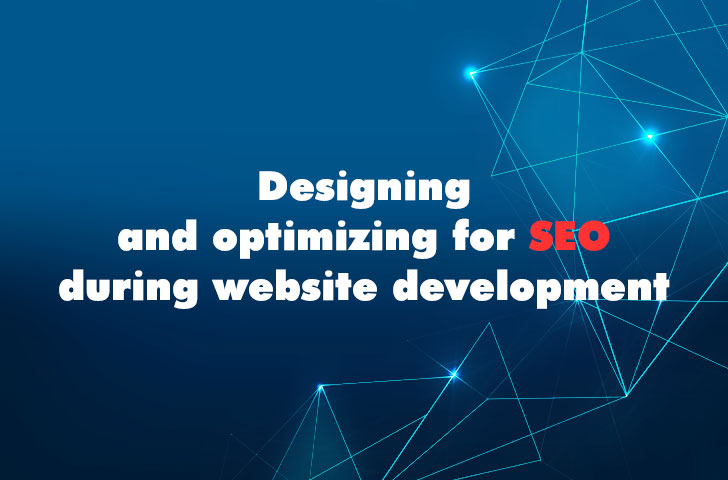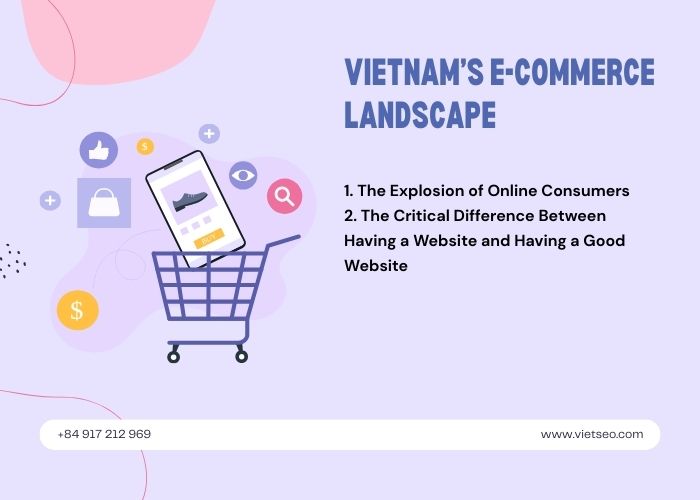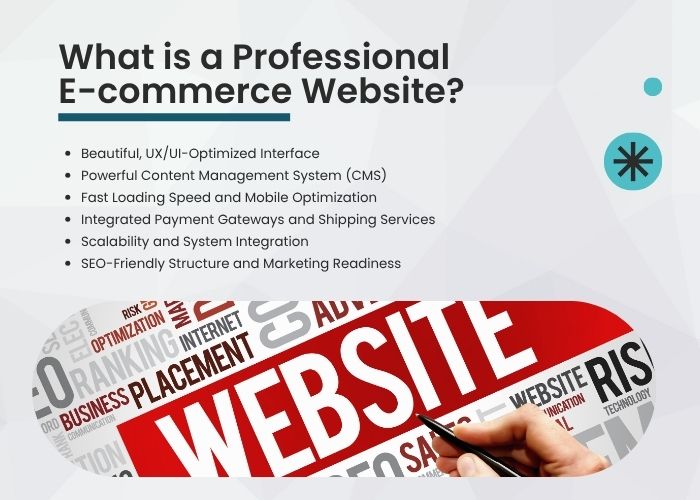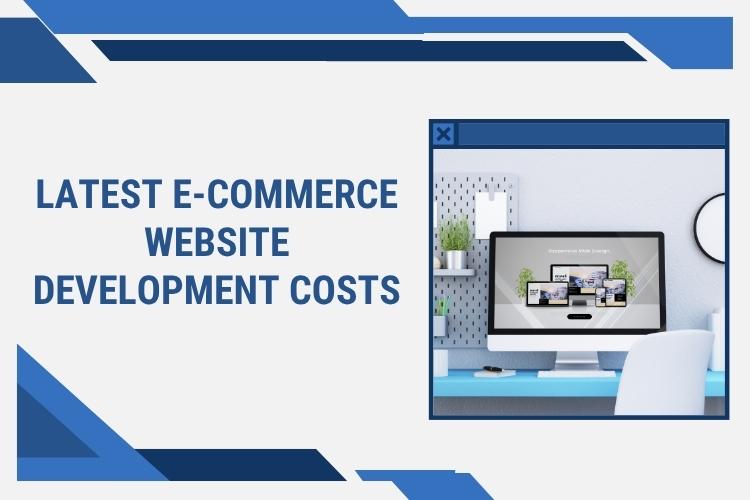SEO-Friendly Web Design: 6 Key Factors for Better Ranking | Viet SEO
Why Web Design and SEO Must Work Together
Many businesses invest in beautiful, visually appealing websites but still fail to gain visibility on Google. The reason is simple: design alone isn’t enough.
A truly effective website must be SEO-friendly — meaning it is both aesthetically pleasing and technically optimized so that users and search engines can easily understand and trust it.
While SEO helps a website appear in search results, poor design can drive visitors away, increasing bounce rates and lowering engagement — two key factors that negatively affect Google’s ranking evaluation.
At VietSEO, we believe web design and SEO must work together from the start, not as separate processes. A well-designed, SEO-optimized website ensures users find you easily, stay longer, and convert more often — creating sustainable growth for your business.
4 Key Benefits of Combining Web Design and SEO
-
Attracting High-Quality Traffic
- Rank higher with well-optimized, engaging content.
- Reach users who are actively searching for your products or services.
- Keep visitors longer on your site, improving conversion rates.
-
Improving Organic Traffic
- 91% of users never go past the first page of Google.
- SEO-friendly design enhances loading speed, structure, and user flow — helping your site stay competitive on search results.
- Better click-through rates (CTR) with optimized titles and meta descriptions.
-
Enhancing User Experience (UX)
- A seamless layout, intuitive navigation, and mobile optimization keep users satisfied.
- Google rewards websites that offer strong UX signals, leading to better rankings.
- Every $1 invested in UX design yields an estimated $100 return — proving that good design pays off.
-
Reducing Marketing Costs
- An SEO-optimized website attracts free, ongoing traffic without heavy ad budgets.
- Lower ad costs due to improved Quality Scores in Google Ads.
- Builds a long-term digital foundation that supports all future marketing efforts.
The Connection Between Design, UX, and SEO
Modern SEO is no longer just about keywords or backlinks — it’s about how people actually experience your website.
Google’s algorithms have evolved to measure user satisfaction, not just content relevance. This means the way your website looks, loads, and functions directly impacts how well it ranks.
When visitors arrive on your site, Google tracks signals like how long they stay, how many pages they explore, and whether they take any meaningful action. If users leave quickly or struggle to find what they need, it sends a negative signal — even if your keywords are perfectly optimized.
That’s where User Experience (UX) comes in. Good UX design helps users navigate easily, understand your content quickly, and feel comfortable engaging with your brand.
Core elements such as page speed, mobile responsiveness, intuitive navigation, and clear content hierarchy are all part of how Google measures website quality through metrics like Core Web Vitals.
When your design and UX work hand in hand, visitors stay longer, bounce rates drop, and conversions rise — all of which tell Google that your site provides genuine value. The result?
Higher visibility, stronger trust, and better rankings over time.
6 Key Factors of SEO-Friendly Web Design
Creating an SEO-friendly website means more than adding keywords or meta tags — it’s about building a strong foundation where design, content, and performance work together.
1. Fast Loading Speed
Speed is one of the strongest ranking signals in Google’s algorithm.
If your website takes longer than 3 seconds to load, you risk losing up to half of your visitors.
To optimize page speed:
- Compress and convert images to WebP or AVIF format.
- Use browser caching and Content Delivery Networks (CDN).
- Minify CSS and JavaScript.
- Implement server-side compression (Brotli or Gzip).
A fast-loading site not only ranks higher but also delivers a better first impression — essential for building trust and conversions.
2. Mobile-First & Responsive Layout
More than 70% of global website traffic comes from mobile devices. That’s why Google applies Mobile-First Indexing, ranking sites primarily based on their mobile version.
An SEO-friendly design must:
- Adjust automatically to all screen sizes.
- Avoid small clickable areas (“tap targets”).
- Prevent content overflow (“content wider than screen”).
At VietSEO, we ensure every project is tested across devices and browsers to guarantee a consistent and professional mobile experience.
3. Semantic Structure & Clean Code
Search engines rely on code semantics to understand your website’s hierarchy and meaning.
A clean, well-structured HTML layout helps Google crawl your content more efficiently.
Best practices include:
- Using semantic tags:
<header>,<main>,,,<footer>. - Avoiding inline styling or unnecessary scripts.
- Maintaining a clear heading hierarchy (H1–H3).
This foundation allows both users and AI-driven systems (like Google’s SGE or ChatGPT) to interpret your content accurately.
4. Clear Navigation & Internal Linking
Navigation is the map of your website. If users or crawlers get lost, your SEO suffers.
A well-designed internal structure should:
- Use a logical menu and breadcrumb system.
- Group content into relevant categories or topic clusters.
- Include contextual internal links with descriptive anchor text.
Internal linking passes “link equity” across your pages, helping Google understand which pages are most important — and helping users discover more of your content naturally.
5. Visual Optimization (Images & Media)
Images and videos play a major role in user engagement but can slow down your website if not optimized.
For SEO-friendly visuals:
- Use descriptive file names and alt attributes containing relevant keywords.
- Apply lazy loading for images below the fold.
- Host videos on YouTube or use structured data (
VideoObject) for video SEO. - Keep image sizes below 200 KB whenever possible.
Optimized visuals not only enhance aesthetics but also support accessibility and search performance.
6. On-Page SEO Foundation
Every SEO-friendly design must include technical on-page fundamentals:
- Optimized title tags and meta descriptions.
- Structured heading tags (H1, H2, H3) following a clear hierarchy.
- SEO-friendly URLs that are short, readable, and keyword-rich.
- Structured data (Schema.org) for articles, products, and services to improve rich results.
Together, these elements make your site more understandable to search engines and more clickable to users.
Technical Enhancements That Strengthen SEO
Design and visuals capture attention, but technical performance determines whether your website can truly compete on Google.
Behind every SEO-friendly design lies a strong technical foundation that helps search engines crawl, index, and evaluate your site effectively.
Here are the key technical elements that power long-term SEO success:
- HTTPS Security (SSL Certificate)
Security is now a non-negotiable ranking factor. Websites that use HTTPS not only protect user data but also gain higher trust from visitors and search engines alike. Google explicitly favors secure sites, and most browsers now flag non-HTTPS pages as “Not Secure,” which can drive users away.
- XML Sitemap and Robots.txt
These files act as roadmaps for search engine crawlers.
An optimized XML sitemap tells Google which pages are most important, while a properly configured robots.txt ensures crawlers don’t waste time on irrelevant or duplicate content. Together, they improve crawl efficiency and indexing accuracy.
- Core Web Vitals & Performance Testing
Google’s Core Web Vitals—Largest Contentful Paint (LCP), First Input Delay (FID), and Cumulative Layout Shift (CLS)—measure how fast and stable your pages feel to real users.
Regularly testing your site with tools like Google PageSpeed Insights or Lighthouse helps identify performance issues early and maintain a smooth, responsive experience across devices.
- Accessibility & User Inclusivity
A well-built website should be usable by everyone, including people with disabilities.
Following WCAG (Web Content Accessibility Guidelines) means ensuring readable typography, strong color contrast, descriptive alt text, and keyboard-friendly navigation.
Beyond compliance, accessibility directly improves usability—something Google increasingly rewards.
Together, these technical layers form the backbone of your SEO-friendly web design.
They don’t just improve rankings; they create a faster, safer, and more inclusive digital experience that stands the test of time.
Common Design Mistakes That Harm SEO
A website can look stunning and still perform poorly on search engines if key SEO principles are ignored. Many common design choices, though visually appealing, can silently harm your site’s performance, crawlability, and user experience.
Below are some of the most frequent mistakes that businesses should avoid:
- Overusing Large Sliders or Background Videos
Heavy media files dramatically slow down page load speed — one of Google’s top ranking factors. Visitors often leave before the page finishes loading, increasing bounce rates and hurting both SEO and conversions.
- Weak or Confusing Heading Structure
Search engines rely on heading tags (H1, H2, H3…) to understand your content hierarchy. Missing H1 tags, or using multiple H1s on a single page, can make your site harder to crawl and dilute keyword relevance. A clear, logical structure helps both Google and users navigate your content easily.
- Intrusive Pop-Ups and Excessive Animations
Pop-ups that block key content or animations that take too long to load disrupt user flow. Google’s Page Experience update penalizes websites that create intrusive interstitials or poor interaction experiences, especially on mobile devices.
- Text Embedded in Images
Using text inside images might look good visually, but search engines can’t read it. This makes it impossible for Google to understand your message or rank that content effectively. Always keep important text as HTML, not part of an image.
By avoiding these design traps, you ensure your website remains fast, accessible, and search-friendly — combining great visuals with strong SEO performance.
How Viet SEO Builds SEO-Friendly Websites
At Viet SEO, we don’t just design websites — we build digital ecosystems engineered for visibility, performance, and long-term growth.
Our team blends UI/UX design, SEO strategy, and technical optimization to create websites that are not only visually impressive but also deliver measurable business impact.
Here’s how we do it:
-
Comprehensive SEO Audit & UX Planning
Every project begins with research. We analyze your target audience, competitors, and keyword landscape to define a solid SEO foundation. Then, we map out the user journey and wireframe layouts that make navigation intuitive and conversion-focused right from the start.
-
Clean, Lightweight Code Structure
VietSEO’s developers follow strict coding standards to ensure every site loads quickly and is easy for search engines to crawl. We eliminate unnecessary scripts, optimize assets, and use responsive frameworks to guarantee performance across all devices.
-
Built-In SEO & Structured Data Integration
From on-page optimization and internal linking to Schema.org markup, we embed SEO best practices directly into the website’s framework. This allows Google to better understand your content and improves your chances of appearing in rich results.
-
Performance Testing & Quality Assurance
Before launch, every website undergoes thorough testing using Google Lighthouse, ensuring full compliance with Core Web Vitals, mobile usability, and accessibility standards. We fine-tune every detail until both humans and search engines love your site.
At Vie tSEO, we believe great design isn’t just about aesthetics — it’s about creating a website that ranks, converts, and drives real growth for your business.
Conclusion – Design for People, Optimize for Search
An SEO-friendly website isn’t something that happens by accident — it’s built with intention, where every design choice supports both user experience and search visibility.
A visually stunning website may capture attention, but only an optimized design can sustain growth, attract consistent traffic, and convert visitors into loyal customers.
When your website is crafted for both people and search engines, you don’t just achieve higher rankings — you build credibility, trust, and long-term digital success.
At Viet SEO, we bring together creativity, technical precision, and SEO expertise to deliver web designs that truly perform.
Each project is designed to look beautiful, load fast, and rank effectively — helping your business stand out in the competitive digital landscape.
Contact Viet SEO today at +84 917 212 969 for a free consultation and discover how we can build a website that’s not just attractive — but truly optimized for growth.





